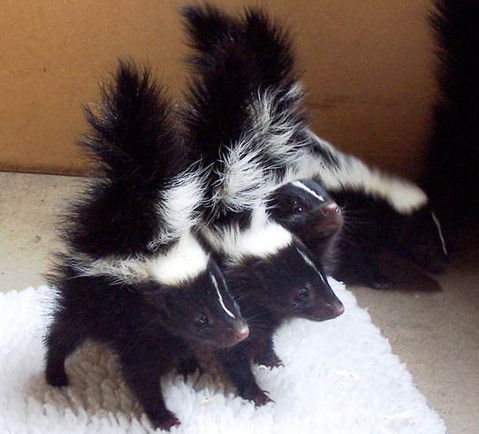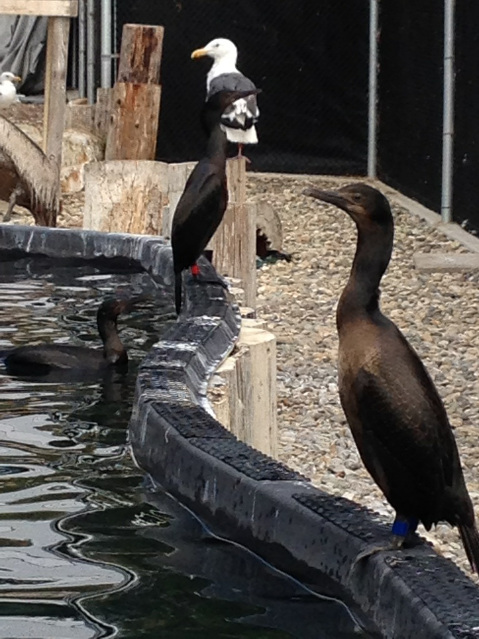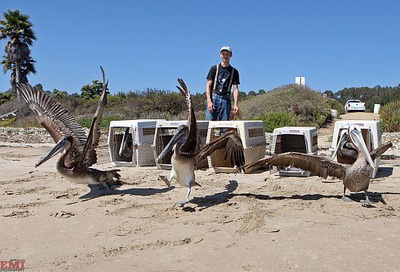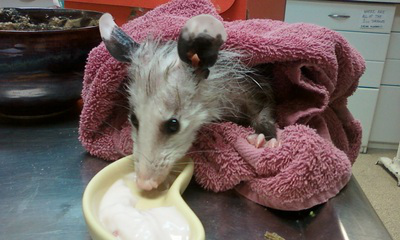Wildlife Care Network Settles into New Home
Volunteers Needed to Answer Calls About Orphaned and Injured Wild Animals

The curious young raccoon pushed its agile front toes through the cage’s mesh and looked at me quizzically as if to say, “Are you going to feed me?” If food was on its mind, it was out of luck. The timing of my recent tour of the Santa Barbara Wildlife Care Network’s (WCN) new headquarters in Goleta did not coincide with its feeding schedule.

Besides, I did not know how to prepare or administer the proper kind and amount of food to the little masked mammal. These are among the skills the nonprofit rehabilitation center on North Fairview teaches its volunteer helpers.
“We try to give animals a second chance,” says my guide, Julia Parker, animal affairs director. The state-certified facility, which opened here in 2012, primarily tends to injured or orphaned songbirds and seabirds, which amounted to roughly two-thirds of the 3,000 animals received in 2014 by the center. Mammals, skunks, and raccoons totaled about 130 last year, an average number says Parker.

“We’re not a sanctuary,” she explains, nor do they kill animals. The network’s top goals are to care for rescued babies until they can fend for themselves, and to help injured juveniles and adults regain their ability to survive in the wild. “The state Fish and Wildlife Department (F&W) gives us up to six months to prepare animals for reintroduction,” she says.
Depending on their ages, injury, and overall health, birds may take two to six weeks of care. Raccoons often require a full six months or more, with F&W approval. Wildlife Care Network also relies on donated time and care from area veterinarians, a few accredited home-care individuals, and, in cases of potential “ambassador animals,” partner zoos in San Diego and Santa Barbara, and the Ojai Raptor Center.
Parker, a former 25-year zoo employee, smiles and adds, “We have a deal with the Raptor Center. They take our birds of prey, and we take their songbirds.”
During the Refugio pipeline oil disaster earlier this year, Elaine Ibarra, the center’s only oil spill-trained staffer, worked with the state’s Oiled Wildlife Care Network (OWCN) on the recovery of some of the 270 birds collected. She stabilized seabirds for transfer to larger facilities. About 300 people also called the Goleta center to help, but none were trained or certified to deal with oil’s toxic elements. OWCN reported that as of October 18, only 50 birds had survived to be released.

Longtime Goletan Jackie Darbyshire, one of the few state-approved wild animal home-care providers in Santa Barbara County, also volunteers under the umbrella of Wildlife Care Network. The retired animal control officer, who specializes in rehabilitating skunks, weasels, and badgers, thinks these animals have suffered untrue and unfair public images, especially skunks.
Skunks are usually shy, nocturnal animals, she says, except in the December-January mating season “when competition among themselves can become violent.” They feed on bugs, grubs, rodents, and even poisonous snakes. “Skunks can withstand 10 times the venom that would harm humans,” says Darbyshire. She also dismisses the idea of tomato juice neutralizing the animals’ spray as a folk myth.
Contrary to their stereotype, skunks do not spray without provocation, adds the rehab veteran of 40-plus years. A rare few learn to hold back even when surrounded by noisy humans. For years a skunk named Curly, whose scent glands were never removed, was her educational assistant. Even when school children made all kinds of noise around him, she says, he did not react defensively.
The recently deceased Curly was a true animal ambassador, in Darbyshire’s opinion. She still grows misty talking about him.

Staff and volunteers seek to teach the public the value of knowing and respecting all wild animals, both in their native habitats and in the built environment. Not feeding them, either by removing outdoor pet food sources or by using inaccessible garbage bins, prevents foraging habits that could create a nuisance animal. “In the long run, you really are doing them no favors,” says Darbyshire. “As a rehabber I can personally attest to the damage caused because I (often) end up with the casualties.”
The nonprofit center responds to around 10,000 calls a year to rescue wild creatures, reports Palmer. She adds that due to inadequate resources and staffing, help sometimes is too slow in coming. Sadly she recalls, “A recent caller sat with an injured seabird for two hours waiting for a volunteer to arrive.”
However, the fact that someone cared enough to call and wait that long heartens her. “I’ve a renewed hope for humanity due to my job here,” she says.
Through visits to schools, area fairs, and when arranged in advance, tours of the still under-construction center Parker hopes to raise awareness of Wildlife Care Network‘s services, expand its education outreach, and recruit more new volunteers. A new executive director has also been hired and should be on the job by the time this column is published
“We have very generous donors,” Parker says. However, what she would really like is to have more troops — they must be at least 18 (if not accompanied by an adult) — for animal transport and care, rescues, data input, running the office, and fundraising events, among the nonprofit’s endless tasks. Yes, regular monitoring of the center’s helpline ([805] 681-1080) is also a priority.



